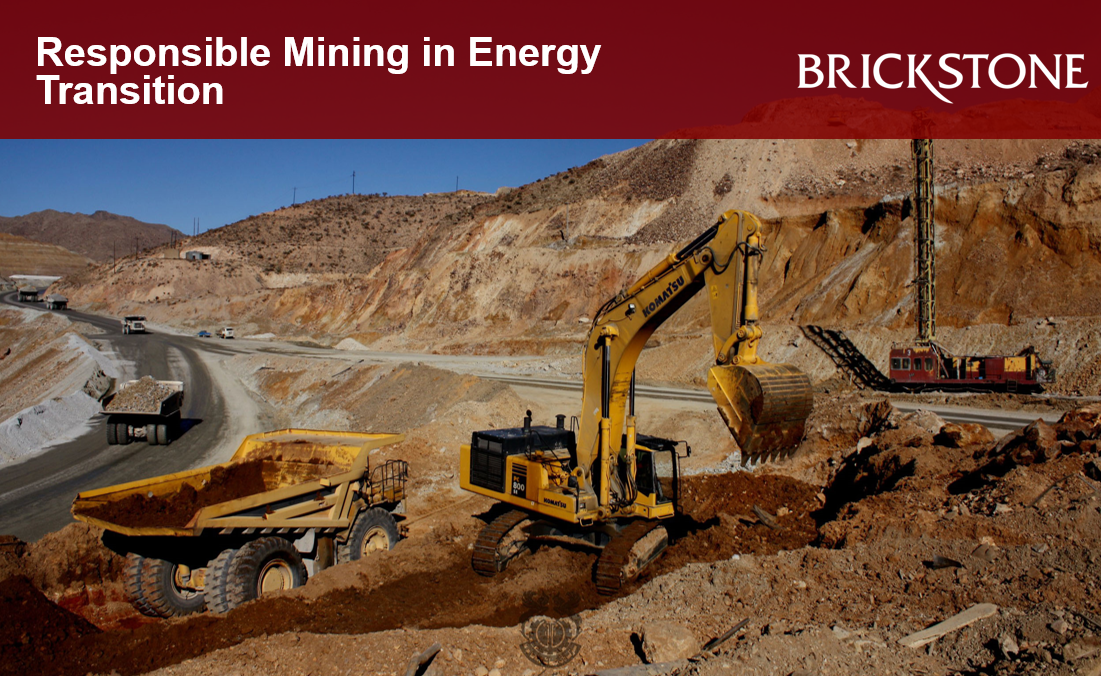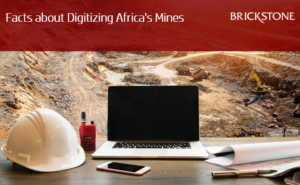Reliable Mining in Resilient Energy Transition
As clean energy transition augments the demand for materials, the mining sector is ill-equipped to keep up in its current state. The conditions of ore deposits are changing, and the technologies and processes that have sustained the industry for the past decades are becoming increasingly energy, water, and environmentally intensive. For real progress in making clean energy more accessible, the mining industry requires meaningful transformation.
This article by Brickstone reviews some institutional reports and publications on the role of responsible mining transition in effective energy transition.
Mining Industry in Energy Transition
The mining process, according to WeForum, from exploration to operation, is highly energy-intensive. It accounts for 10% of the world’s energy consumption, hindering net-zero ambitions and causing significant environmental impact from land-use change.
To make the clean energy transition possible, we must focus efforts to meet the growing demand for materials, while making sure this growth is sustainable and minimal in its climate impact.
The mining sector is critical to making a low-carbon future a reality. If governed well, the mining sector can help countries meet climate and energy security priorities.
Deploying technologies at the pace and scale needed to meet energy needs and tackle climate change requires reliable supplies of minerals. Lithium, cobalt, graphite and rare earth elements are needed mainly for battery storage and electric vehicles (EVs). Aluminum, copper, nickel, manganese, tin, titanium, zinc and other metals are needed for EVs, solar panels, wind turbines and electricity networks. According to WeForum, transitioning towards clean energy currently requires as much as 3 billion tons of metals, and the demand is expected to grow in the coming decades. To hit net-zero emissions globally by 2050, we would require six times more mineral inputs in 2040.
An unprecedented demand of 3 billion tons of metals exists if we’re to effectively transition to clean energy. To hit net-zero emissions globally by 2050, the industry will require six times more mineral inputs by 2040.
The energy transition’s escalating demand for minerals, according to EITI, puts pressure on governance at all levels, including heightening risks for communities and eco-systems close to extractive industries. Accordingly, If not well governed, mining impacts could hinder the sector’s contribution to sustainable development and inhibit the fight against climate change. Spanning across global, transnational, national and subnational levels of mineral governance, other risks are manifold, ranging from regulatory shortcuts and corrupt deals, to price shocks and lost revenues.
For policymakers, the message is clear: governance weaknesses could disrupt the supply of minerals needed for low-carbon energy technologies. This could slow the pace of decarbonisation and make it more difficult for countries to wean themselves off fossil fuels.
Also, beyond the importance of strengthening energy security, we need to confront the question of who benefits from the deployment of low-carbon energy and who bears the burden of supplying minerals. Ignoring governance challenges could mean that the energy transition compromises human rights and biodiversity, and could be at odds with growing expectations around responsible sourcing and sustainable business conduct. The means of mineral production and trade need to be consistent with the ends to which they are used: they must benefit all people and the planet, leaving no one behind.
Read more here.






